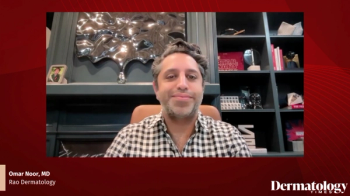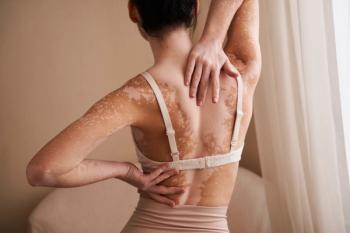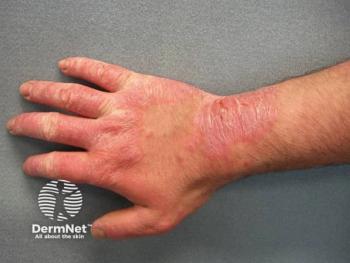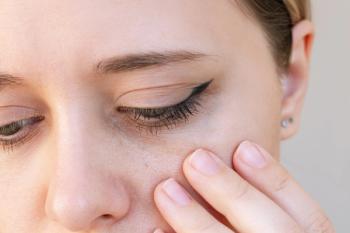
Minocycline Foam Significantly Improves Papulopustular Rosacea Outcomes
Key Takeaways
- Topical minocycline foam significantly reduced inflammatory lesions and improved IGA scores in papulopustular rosacea patients, outperforming gel formulations and placebo.
- The study reviewed three topical minocycline formulations, with 1.5% foam showing the most promising results in reducing lesion counts and improving IGA scores.
Researchers conduct a review to understand the efficacy and safety of topical minocycline for the treatment of moderate to severe papulopustular rosacea.
Topical minocycline foam significantly reduced inflammatory skin lesions and improved Investigator Global Assessment (IGA) scores among patients with papulopustular rosacea (PPR), according to data published in Frontiers in Medicine.1
“PPR, one of the subtypes of rosacea, presents with unremitting centrofacial erythema along with the eruption of papules and pustules,” wrote the authors of the study. “In addition to avoiding triggers and sun protection, treatment measures for PPR include a combination of topical and systemic treatments depending on severity. Systemic treatment is utilized in moderate-to-severe PPR [and] commonly involves oral antibiotics, namely tetracyclines.”
According to the National Rosacea Society, the worldwide prevalence of rosacea is 5.1% of the population.2 Slightly behind erythematotelangiectatic rosacea, PPR constitutes the second largest share of rosacea subtypes at 43.2%.3
The first line of treatment for patients with PPR has been the tetracycline antibiotic minocycline. Despite evidence highlighting minocycline’s efficacy, adverse effects are notable and can include photosensitivity, gastrointestinal discomfort, and liver disorders. Furthermore, topical treatments have been commonly ineffective for moderate-to-severe PPR cases.
With their exploration of topical minocycline among a population that has not had success, researchers looked to a new route in managing inflammation, reducing lesions, and preventing flare-ups among patients with PPR.
“This study aims to review the literature to delineate the efficacy and safety of topical preparations of minocycline in the treatment of moderate-to-severe PPR,” they wrote.1 “By offering insights into a different therapeutic strategy that might yield good outcomes with potentially fewer systemic side effects than oral antibiotics, this research will advance the profession of dermatology.”
In their systematic review, researchers explored the efficacy and safety of 3 different topical minocycline formulations and how they compared with the placebo in patients with moderate-to-severe PPR. Those 3 formulations included 1.5% minocycline foam as well as 1% and 3% minocycline gel.
“Efficacy outcomes included the absolute change in inflammatory lesion counts, the percentage change in the inflammatory lesion count, the percentage of participants achieving IGA with improvement of at least 2 grades, and the proportion of individuals that achieved an IGA 0/1 score (‘clear’ or ‘almost clear’),” continued the authors of the study.1
The final analysis included a total of 5 randomized controlled trials (RCTs) featuring a total of 2453 participants (mean age range, 48.9–54.8; 70% women) with PPR. A total of 1420 patients received 1.5% minocycline foam, 92 received 1% gel, and 96 received the 3% gel. The placebo group included a total of 845 participants.
In the 2 RCTs showing minocycline foam reducing lesion count, both showed statistically significant results from baseline to week 12. When compared with placebo, minocycline foam produced the most successful lesion-reducing effects. For improvements in IGA scores at week 12, all 3 minocycline formulations were successful. Irritant skin reactions were found in the use of topical minocycline, with the incidence of moderate erythema reaction to minocycline foam considered significant.
“The results of our meta-analysis demonstrated that minocycline foam, particularly the 1.5% formulation, was effective in reducing inflammatory lesion counts compared to the vehicle,” continued the authors.1 “Both minocycline foam 1.5% and minocycline gel (1% and 3%) showed improvement in IGA scores at week 12, with minocycline foam outperforming the gel formulations in treatment success. Additionally, minocycline foam 1.5% showed greater efficacy in reducing inflammatory lesion counts compared to the vehicle. These findings suggest that minocycline foam, especially at 1.5%, offers a promising treatment for inflammatory skin conditions.”
Despite all formulations showing success across all efficacy outcomes, minocycline foam produced the most significant results. While previous research has informed patients’ use of topical minocycline, researchers are now further understanding which topical options provide the best outcomes among patients with PPR. When it comes to improving all 3 PPR outcomes presented in this study, more research is needed to understand the efficacy and safety of topical minocycline formulations.
“The treatment exhibited a generally favorable safety profile, with minimal adverse effects such as moderate erythema. These results suggest that minocycline foam could be a promising therapeutic option, though further well-powered studies are needed to confirm its efficacy and safety in a broader patient population,” concluded the authors.1
References
1. Alamri A, Alsamadani AH, Alraddadi RA, et al. Efficacy and safety of topical minocycline preparations for papulopustular rosacea: a systematic review and meta-analysis. Front Med (Lausanne). 2025 Apr 1;12:1517825. doi: 10.3389/fmed.2025.1517825.
2. New study estimates rosacea’s worldwide prevalence. National Rosacea Society. May 23, 2024. Accessed April 18, 2025. https://www.rosacea.org/blog/2024/may/new-study-estimates-rosaceas-worldwide-prevalence
3. Barakji YA, Rønnstad ATM, Christensen MO, et al. Assessment of frequency of rosacea subtypes in patients with rosacea: a systematic review and meta-analysis. JAMA Dermatol. 2022;158(6):617–625. doi:10.1001/jamadermatol.2022.0526
[This article was originally published by our sister publication,
Newsletter
Like what you’re reading? Subscribe to Dermatology Times for weekly updates on therapies, innovations, and real-world practice tips.



















